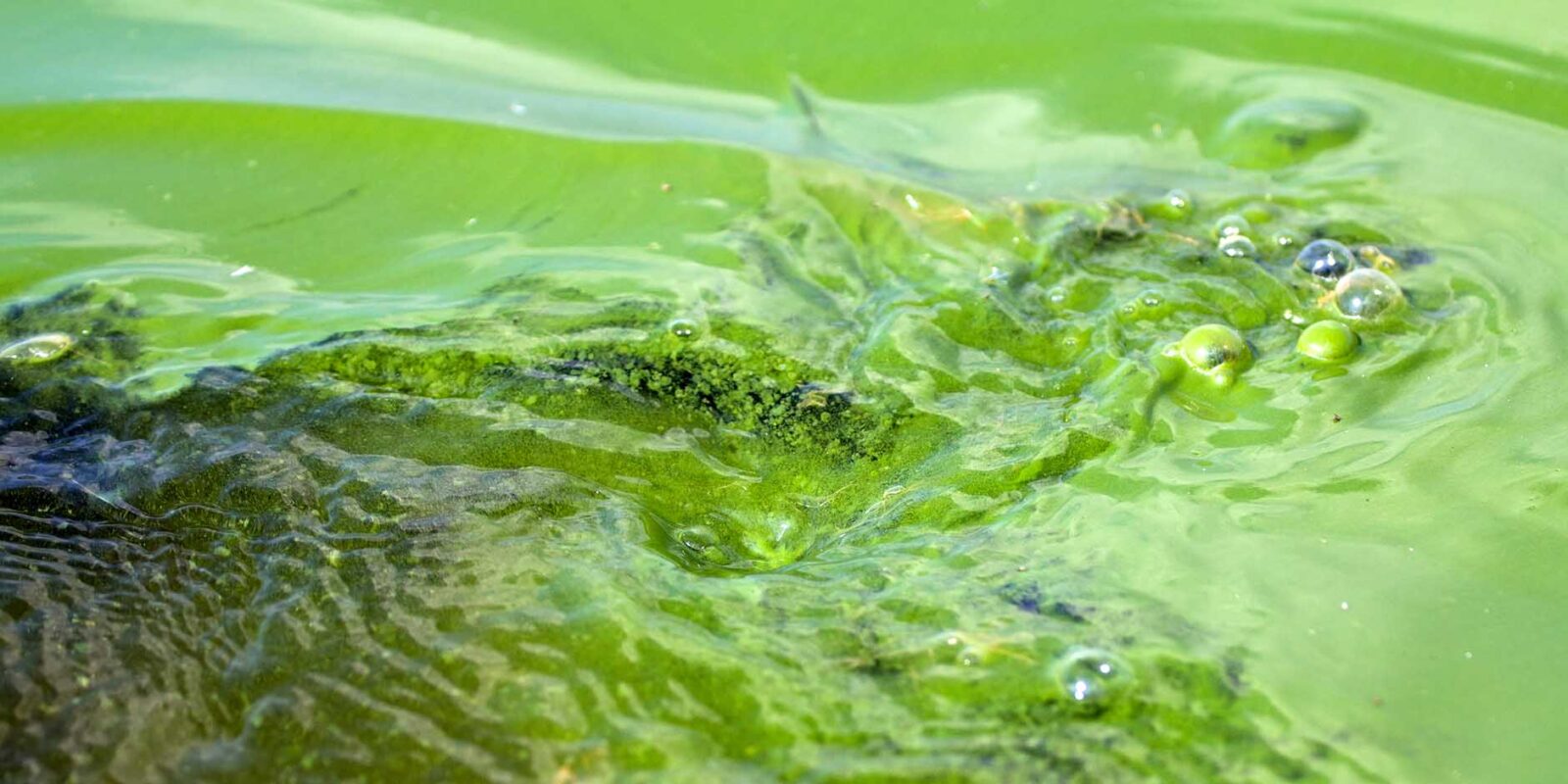In short
- Algae problems occur almost everywhere where is being stored;
- Stagnant water combined with high temperatures or a high concentrations of nitrates and phosphates fuels algae blooms.
Blue-green algae, also known as cyanobacteria, can cause serious cause illnesses in humans, animals, and aquatic life. Besides, they turn waters green and unclear, cause foul odors and bad taste. They suffocate aquatic plants and other organisms by depleting the oxygen in water. Therefore, algae blooms are a serious problem that needs immediate attention.
What are algae?
Algae are a diverse group of plant-like organisms that grow in a wide range of environments. They contain chlorophyll, have simple reproductive structures, and their tissue is not differentiated into roots, stems, or leaves. They range from unicellular, or single-celled, to fairly complex multicellular organisms. Some algae types have such a complex growth that they are mistaken for vascular plants.
The size of average individual microscopic unicellular algal cells is approximately 0.0010 mm in diameter.
Algae are found throughout the world and can cause problems in all kinds of settings, from water treatment plants, to drinking water supplies, ponds, swimming pools, and cooling towers. The extermination of algae is a problem, the methods to control algae can be expensive, cumbersome, environmentally unfriendly or all of these.
Algae can be appear on vegetation, in the air, in the soil, and in water. Their microscopic spores are continuously carried into pools and other water reservoirs by wind, dust storms, rain showers, etc. They grow rapidly in stagnant waters, especially when exposed to sunlight and temperatures above 4 degrees Celsius. They can form objectionable slime and/or odors. Algae can interfere with proper filtration and they greatly increase chlorine demand. Phosphates and nitrates in water only fuel their growth.
Types of algae
Algal growth occurs in three basic forms:
- Planktonic
- Filamentous
- Macrophytic
Planktonic algae are single-celled, microscopic algae that float freely in the water. When these plants are extremely abundant, or “bloom”, they turn waters green. Less often, these blooms turn waters yellow, gray, brown, or red.
Filamentous algae are sometimes referred to as “thread algae” or “pond scum.” Filamentous algae occur as fine green threads that form floating mats, which are often moved around the pond by the wind. These algae are also commonly found attached to rocks, submerged trees, other aquatic plants and boat docks.
Macrophytic algae resemble true plants, as they appear to have stems and leaves. A commonly-occurring macrophytic algae is called Chara or musk grass (due to its strong musky odor). Chara feels coarse to the touch due to lime deposits on its surface, earning it another common name—stonewort.
Algae problems
Filamentous and planktonic algae can reproduce at phenomenal rates, and sudden die-offs can cause oxygen depletion. The necessary oxygen required in fish ponds or lakes can be supplied by other aquatic plant life in the water basin, which will flourish without the competition of algae.
Algae-related problems are usually caused by excessive nutrients in a water body. From the moment a pond is built, for example, it becomes a settling basin for nutrients washing in from the land that drains into the pond’s watershed.
The older a pond gets, the more nutrients will accumulate, and the more susceptible it will get to algal issues. Runoff from fertilized fields, lawns and pastures, feedlots, septic tanks, and leach fields accelerate nutrient loading and algal growth.
Algae growth conditions
Excessive algae growth will starve or suppress other forms of aquatic life, and block sunlight necessary for their proper growth. Taste and odor problems in drinking water and sometimes even fish kills are associated with excessive planktonic algae blooms.
Filamentous algae and macrophytic algae make fishing, swimming, and other recreational uses nearly impossible due to the thick layer they form. Total coverage can restrict sunlight penetration and limit the production of oxygen and food supply necessary for fish.
When such blooms interfere with the intended use of the pond, they need to be controlled immediately.
Algae control
Filamentous algae mats may be removed with a rake, screen wire, or similar devices. However, this method is labor-intensive and provides only temporary control. In some instances, the algae may seem to grow as fast as they are pulled out.
Before dosing chemicals, you should consider potential contamination of domestic water supplies and the waiting periods for watering livestock, eating fish, swimming and irrigation.
A “biological control” is when one form of life is used to control another or the balance of life is manipulated in such a way to adversely affect an undesirable pest. It’s wise to be cautious when deciding on biological control. It can backfire when the new species that were introduced become more of a problem than the original pest.
Barley Straw has been tested in England by the Centre for Aquatic Plant Management for the control of planktonic and filamentous algae. This testing has been going on over the last 15 years. Barley Straw and other straws have been used sporadically in the United States, with very mixed results, and will not totally solve the problem.
